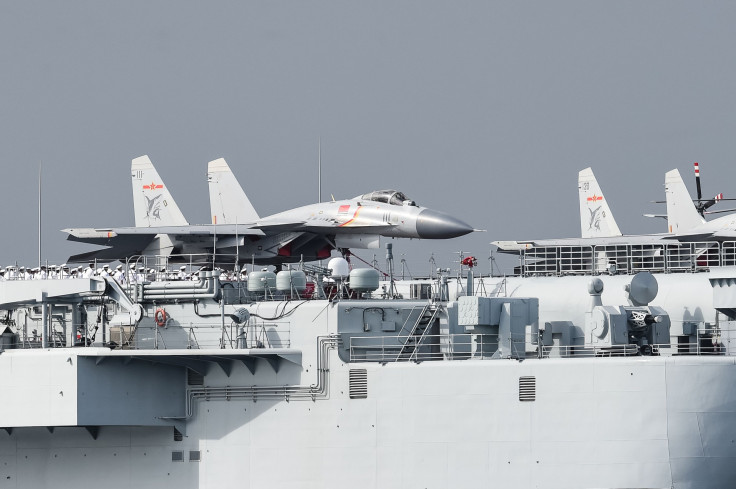Chinese Military Aircraft Crashes During Training Exercise [Photos, Video]

The People’s Liberation Army (PLA) Air Force on Monday confirmed a Chinese military plane crashed in the Chinese southwestern province of Guizhou during a training exercise.
According to a report in the South China Morning Post (SCMP), the aircraft went down in Zhengchang Town, Suiyang county, and was later confirmed by PLA on Chinese social media website, Weiko. "In the afternoon of January 29, an aircraft from the Air Force crashed during flight training in Guizhou province. Currently, search and rescue efforts are underway."
Video footage of the crash shared by Hong-Kong based Phoenix TV showed the plane ablaze mid-flight.
Several news outlets posted pictures of burning debris and a huge plume of smoke as the result of the crash.
#BREAKING: Military plane crash reported in Guizhou Province, China. Casualties unknown. pic.twitter.com/G6aSEIuPS6
— UA News (@UrgentAlertNews) January 29, 2018
#China: Chinese military plane crashes in training exercise https://t.co/69PqI0TT2s pic.twitter.com/18mHYDbvYM
— Matias E. Ruiz (@MatiasERuiz) January 29, 2018
No casualties were reported, however, China’s Air Force confirmed that a rescue operation, as well as an investigation into the crash, is underway. How many people are missing was not revealed.
Reports state the reason behind the crash could be the increase in the frequency and intensity of training, after Chinese President Xi Jinping’s call to turn the PLA into a combat-ready and modern fighting force.
This follows President Xi Jinping’s repeated calls for the Chinese Army to be combat-ready since 2016 by learning from their Western rivals, mainly the United States. Reports suggest this could be the reason behind the increase in these unfortunate accidents. In May 2016, Macau-based military observer Antony Wong Dong weighed in on the issue and told SCMP it wouldn't be surprising if there was an increase in PLA jet crashes, considering the president’s orders.
"Fighter crashes are very common in the U.S. military even though it has the world’s most capable military pilots. More drills will result in more accidents, which will allow pilots to learn practical lessons. In recent years, PLA pilots have become more capable, with some crashes showing they have done well in reducing casualties," Wong Dong said.
In July 2016, a pilot died after he lost control of his plane during a simulated deck landing exercise, leading to a Chinese J-15 carrier crash at an unspecified inland base.
"When Zhang Chao was flying a carrier-based jet fighter in a mock landing on an aircraft carrier on April 27 [2016], he encountered a breakdown with the fly-by-wire flight control system. At the critical moment, Zhang tried his best to save the aircraft. When the pushrods failed, he ejected and died as a result of an injury on landing," a Chinese National Radio report said.
Wong Dong said at the time: "As was with the case with accidents during trial flights of the Su-27s in the 1980s, the reason behind the crash of the J-15 could either be a failure in the flight control system or a problem with production quality."
Reports back in 2016 state the Canada-based Kanwa Defense Review said the development of the J-15 by the aircraft’s maker, Shenyang Aircraft Corporation, was way behind the demands of the navy.
Military observers suggested the PLA might reconsider its commitment towards the J-15, however, Wong Dong denied the idea saying that with no alternative in sight, it was highly unlikely for the Chinese military to abandon the J-15.
As of now, the defense ministry is in the process of building its second aircraft carrier which would adopt the same ski-jump take-off design that would suit J-15 jets. The carriers are expected to be ready for use by the year 2020.
© Copyright IBTimes 2024. All rights reserved.






















